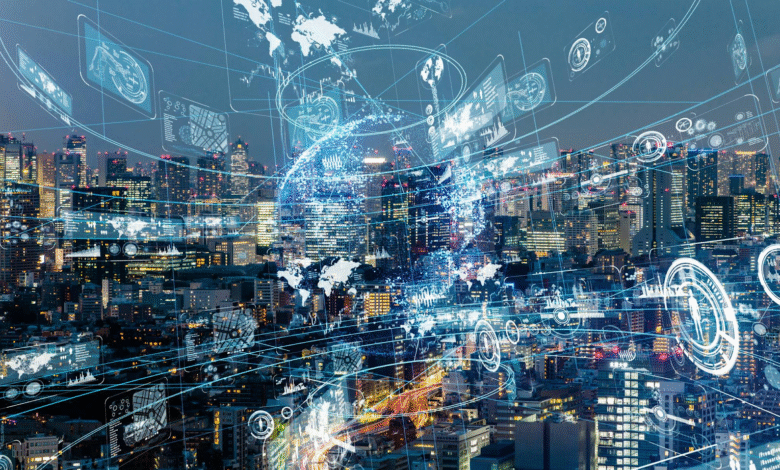Advanced Technology in Japan: Innovation Shaping the Future

Japan has long been considered a leader in technological advancements around the world. To begin with, it has pioneered robots and developed next-generation transportation systems, consistently pushing the boundaries of what is possible. In recent years, however, other countries have also joined the race, driven by a deep-rooted engineering tradition, robust research and development infrastructure (F&E), and a culture that embraces futuristic ideas. In this context, we will examine advanced technology in Japan, its social impacts, and the key areas that are expected to define the future.
1. Robotics and Automation
Japan is probably the most famous innovator in robotics. Companies such as Honda, Toyota and Soft Bank Robots have developed humanoids and industrial robots, which are part of everyday life, both in everyday life and in homes.
1.1. Asimo
Honda’s humanoid robot Asimo was one of the first robots that could run and run like a person. Although development for Asimo is complete, its legacy continues to influence the new model. Soft Bank’s Pepper, a robot developed for customer interaction, is often used in the retail and service sectors. In the meantime, FANUC and Yaskawa Electric Lead offer industrial robot automation solutions used in production facilities around the world. Japan’s aging population is driving innovation in robotics for the care of older people. Supporting robots that monitor mobility, critical functions and provide friendship are used in nursing homes to reduce the burden on human nursing staff.
2. High speed transport
To begin with, Japan is renowned for its Shinkansen, or bullet trains, which debuted in 1964 as the world’s first high-speed rail transport system. Since then, these advanced trains have evolved significantly and can now reach speeds of up to 320 km/h. As a result, they offer an exceptional blend of speed, safety, and comfort — qualities that continue to set global standards in modern rail transportation.
2.1. Railway Sector
Japan, moving beyond traditional railways, is breaking new ground with Maglev (magnetic levitation) technology. Specifically, the Chuo Shinkansen, developed by the Central Japan Railway Company, aims to connect Tokyo and Nagoya at speeds of 500 km/h, reducing travel time to just 40 minutes. By minimizing friction and noise, Maglev technology offers a glimpse into the future of high-speed transportation.
Japan is also investing in smart mobility solutions such as self-driving cars, intelligent transportation systems, and drone logistics, especially in rural areas where transportation services are limited.
3. Home Appliances and Intelligent Devices
Japan’s consumer electronics industry has created global wealthy names such as Sony, Panasonic, Toshiba, and Sharp. Competition is escalating from other countries, but Japan continues to lead home automation, portable technology and health monitoring equipment. Smart appliances integrated into the Internet of Things (IoT) are standard in Japanese homes. A refrigerator that notifies users when they are food, AI-driven washing machines, or voice-activated lighting systems.
3.1. Furthermore
Japan is contributing to the global semiconductor market. This is extremely important for the production of chips used in smartphones, computers and electric vehicles. Companies such as Renesas Electronics and Kioxia (formerly Toshiba Memory) have invested heavily in next-generation chips and memory technology.
4. Artificial Intelligence (AI) and Machine Learning
AI is a central focus in Japan’s technological strategy. Government initiatives such as Social 5.0 proposed by the Japanese Cabinet aim to integrate AI and big data into all aspects of life, from education and healthcare to infrastructure and urban planning.
4.1. AI
Japanese researchers use AI to tackle complex social issues. For example, AI is used to predict earthquakes, optimise energy consumption, and improve agricultural productivity. In healthcare systems, algorithms for machine learning are useful for detecting cancer or retinal diseases, particularly from medical images.
5. Space technology
Private companies are also considering the use of AI in language processing, fintech and robotics to ensure that Japan remains competitive at the KI stage around the world. Space Technology
Japan has implicitly advanced space technology through its space agency Jakusa (Japan Aerospace Exploration Agency). The Hayabusa2 mission successfully collected rehearsals from the asteroid Ryugu and returned to Earth in 2020 to demonstrate Japan’s accuracy and ambitions in planetary science.
5.1. NASA
Looking ahead, future projects include Japan’s collaboration on NASA’s Lunar Gateway, Earth observation satellites for climate monitoring, and technologies aimed at reducing space debris. As a result, Japan’s role in space research is becoming increasingly strategic, particularly as it works alongside international partners on lunar surface missions and sustainable satellite operations.
5.2. Challenge and the streets before
Despite his technical skills, Japan faces certain challenges. Technology alone cannot fully compensate for the aging population and the decline in fertility rates. Furthermore, Japan’s starting ecosystem is behind the US and China, making it even more difficult for new technology entrepreneurs.
6. Private Sectors
However, government initiatives and private sector investments are trying to change Advanced technology in Japan. Programs that support digital transformation (DX), cyber security, and research funding can help bridge the gaps. Furthermore, the Tokyo Technology Innovation Hub and Kyoto University Entrepreneurial Program aim to increase innovation in academic institutions.
Conclusion
The journey of advanced technology in Japan is far from over. To stay competitive in the face of modern demands and global innovation, Japan continues to advance in robotics, AI, transportation, and space technologies — developments that not only shape its own future but also influence the world at large. Despite ongoing challenges, the nation’s unwavering commitment to excellence, safety, and sustainability ensures that it remains a key player in the global technological landscape.



